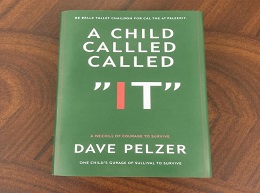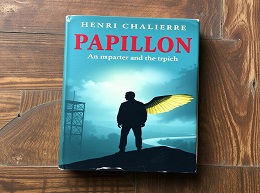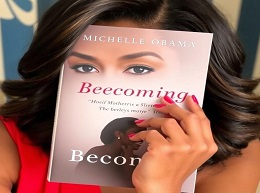Just Kids

Exploring Patti Smith's Memoir "Just Kids": A Deep Dive
Patti Smith's "Just Kids," published in 2010, is a poignant and beautifully written memoir that chronicles her relationship with the renowned photographer Robert Mapplethorpe. This memoir not only delves into their unique bond but also vividly depicts the vibrant and transformative New York City art scene of the late 1960s and 1970s. Awarded the National Book Award for Nonfiction, "Just Kids" is a testament to the power of friendship, art, and perseverance. This review will explore the various elements that make "Just Kids" a compelling read, highlighting its emotional depth, literary brilliance, and historical significance.
Meeting Robert Mapplethorpe
Patti Smith's memoir begins with her arrival in New York City in 1967, a pivotal moment that sets the stage for the unfolding of her artistic journey. She recounts her serendipitous meeting with Robert Mapplethorpe, a moment that marked the beginning of an enduring and transformative friendship. Their initial encounter at the Pratt Institute, where both were aspiring artists, is depicted with a sense of destiny and mutual recognition. Smith writes, “It was the summer Coltrane died. Flower children raised their empty arms and tiny fists to the sky. Robert and I were transported, connected by a thread.”
This instant connection forms the foundation of their relationship, a bond that transcends mere friendship and evolves into a profound partnership. Their mutual support and unwavering belief in each other’s talents become the cornerstone of their respective artistic pursuits.
The Struggles of Young Artists
"Just Kids" provides an intimate look into the struggles and sacrifices of young artists trying to find their place in the world. Smith and Mapplethorpe's early years in New York City were marked by poverty and uncertainty, yet their commitment to their art never wavered. They lived in various places, including the infamous Chelsea Hotel, a haven for artists and musicians.
Smith’s detailed descriptions of their living conditions and daily struggles paint a vivid picture of the realities faced by aspiring artists. Despite the hardships, there is a sense of romanticism in their resilience and dedication. Smith reflects on these challenging times with a mixture of nostalgia and pride: “We had no money, but we were rich in ideas and had no sense of the obstacles ahead of us.”
The Evolution of Their Art
As their relationship deepens, so does their artistic evolution. Smith’s transition from poetry to music and Mapplethorpe’s journey from drawing to photography are central themes in the memoir. Their creative processes are intricately described, showcasing their growth as artists and the ways they influenced each other.
One of the most compelling aspects of "Just Kids" is Smith’s portrayal of Mapplethorpe’s artistic development. Initially hesitant about photography, Mapplethorpe eventually finds his true medium, with Smith often serving as his muse. Smith writes about the pivotal moment when Mapplethorpe fully embraces photography: “The camera was his alchemy. It was a manifestation of his own transformation and his power to transform.”
Similarly, Smith’s foray into music is depicted as a natural extension of her poetic expression. Her eventual rise to fame as a punk rock icon is foreshadowed by her early performances at venues like CBGB, where her raw and unfiltered style captivated audiences.
The New York Art Scene
"Just Kids" is as much a memoir of Patti Smith and Robert Mapplethorpe as it is a love letter to the New York City art scene of the 1970s. The memoir is populated with vibrant descriptions of the city and its eclectic mix of artists, musicians, and writers. Smith's interactions with influential figures such as Allen Ginsberg, Andy Warhol, and Janis Joplin provide a rich context for understanding the cultural milieu of the time.
Smith’s ability to capture the essence of this era is one of the memoir’s greatest strengths. Her evocative descriptions bring to life the energy and excitement of a city that was a melting pot of creativity and innovation. She writes, “New York was a city filled with promise and adventure. Each day brought new discoveries and encounters with people who, like us, were striving to make their mark.”
The Complexity of Their Relationship
The relationship between Smith and Mapplethorpe is at the heart of "Just Kids," and it is portrayed with honesty and nuance. Their bond was not without its challenges, including Mapplethorpe’s struggle with his sexual identity and their occasional romantic entanglements. Despite these complexities, their friendship remained a constant source of support and inspiration.
Smith’s portrayal of their relationship is deeply moving, highlighting the ways they nurtured and protected each other. Their bond was a sanctuary amidst the chaos of their lives, a relationship built on trust, respect, and a shared artistic vision. Smith reflects on this enduring connection: “Robert and I made a pact to support and look after each other, no matter what happened. It was a vow that we never broke.”
Tragedy and Legacy
The memoir takes a poignant turn with the diagnosis of Mapplethorpe’s AIDS in the late 1980s and his subsequent death in 1989. Smith’s recounting of these events is filled with sorrow and reflection, yet it also underscores the enduring nature of their bond. Her commitment to preserving Mapplethorpe’s legacy and honoring his memory is evident in her writing.
Smith’s reflections on loss and the passage of time are some of the most powerful moments in the memoir. She writes, “The past does not dissolve like a mirage; it remains to echo and fade within us.” Her ability to articulate the pain of losing a loved one while celebrating their life and work is a testament to her literary skill and emotional depth.
Literary Style and Structure
Patti Smith’s writing style in "Just Kids" is lyrical and evocative, blending poetic prose with candid narrative. The memoir’s structure, with its seamless transitions between past and present, mirrors the fluidity of memory and the interconnectedness of their lives. Smith’s attention to detail and her ability to capture the essence of moments make the memoir a rich and immersive reading experience.
Her use of vivid imagery and sensory descriptions brings the narrative to life, allowing readers to fully engage with the world she portrays. Whether describing the gritty streets of New York or the intimate moments shared with Mapplethorpe, Smith’s prose is both captivating and deeply affecting.
Critical Reception and Impact
Upon its release, "Just Kids" received widespread acclaim for its emotional honesty and literary excellence. Critics praised Smith’s ability to capture the spirit of an era and the depth of her relationship with Mapplethorpe. The memoir’s impact extends beyond the literary world, resonating with readers who appreciate its exploration of art, friendship, and resilience.
The success of "Just Kids" also reaffirmed Patti Smith’s status as a multifaceted artist, demonstrating her prowess not only as a musician but also as a writer. The memoir’s influence is evident in its enduring popularity and its role in inspiring new generations of artists and readers.
"Just Kids" by Patti Smith is a beautifully crafted memoir that offers a deeply personal and richly detailed account of her relationship with Robert Mapplethorpe and their artistic journey in New York City. Through her lyrical prose and candid reflections, Smith provides readers with an intimate look into their lives, capturing the essence of their bond and the transformative power of art.
For those interested in the intersections of art, friendship, and the cultural history of the 1970s, "Just Kids" is an essential read. Patti Smith’s memoir is not only a tribute to a remarkable friendship but also a testament to the enduring spirit of creativity and resilience.













